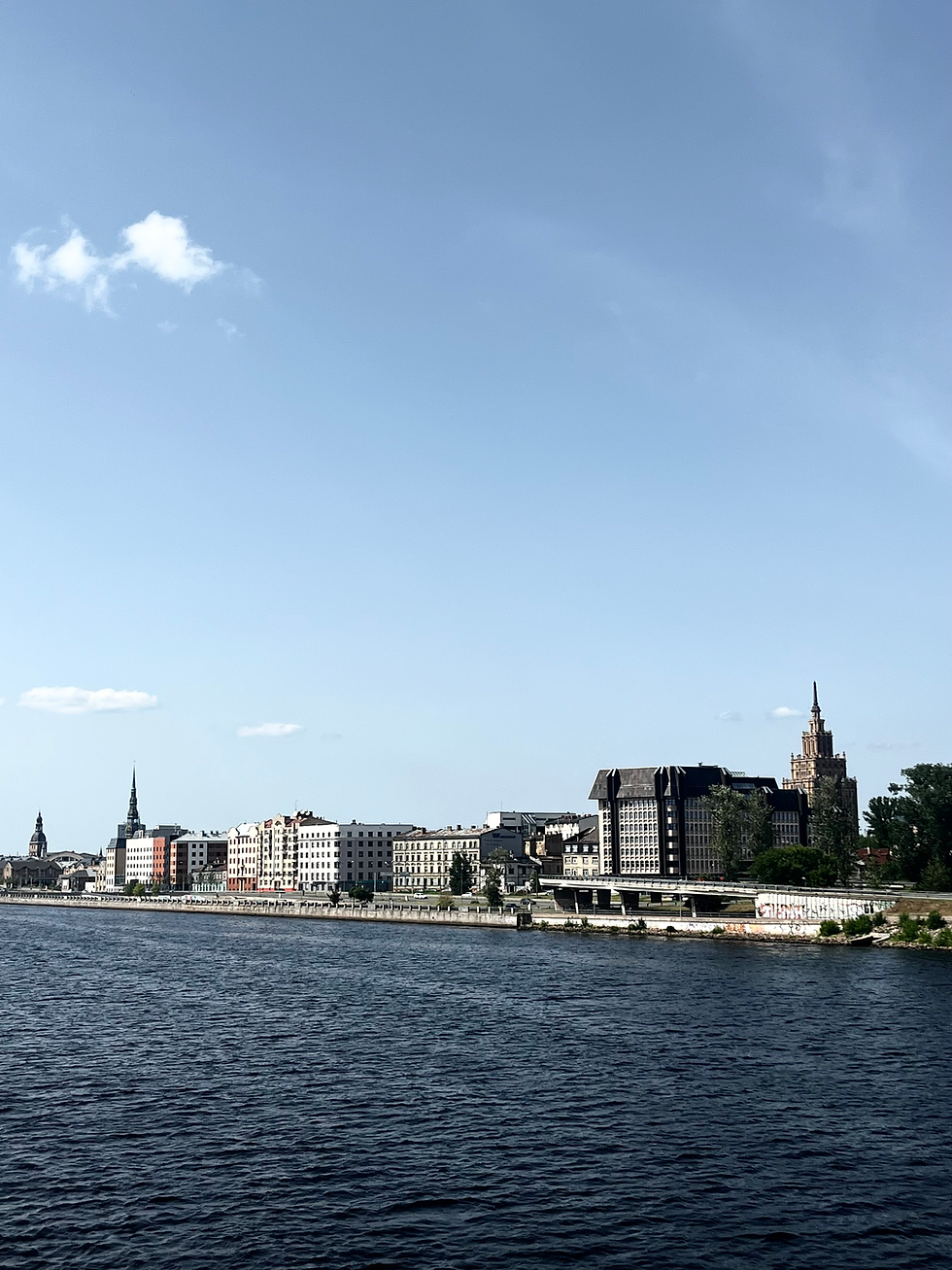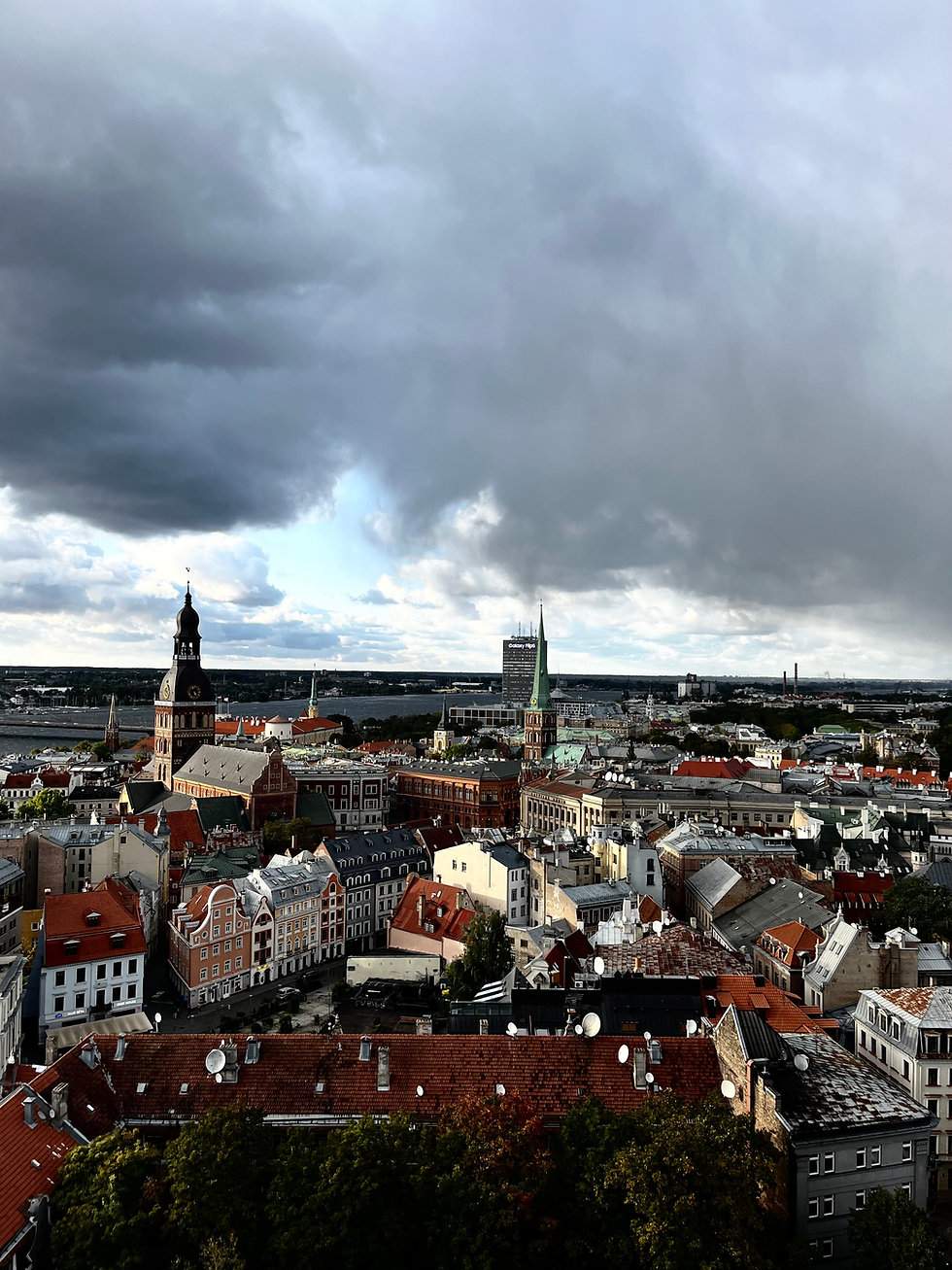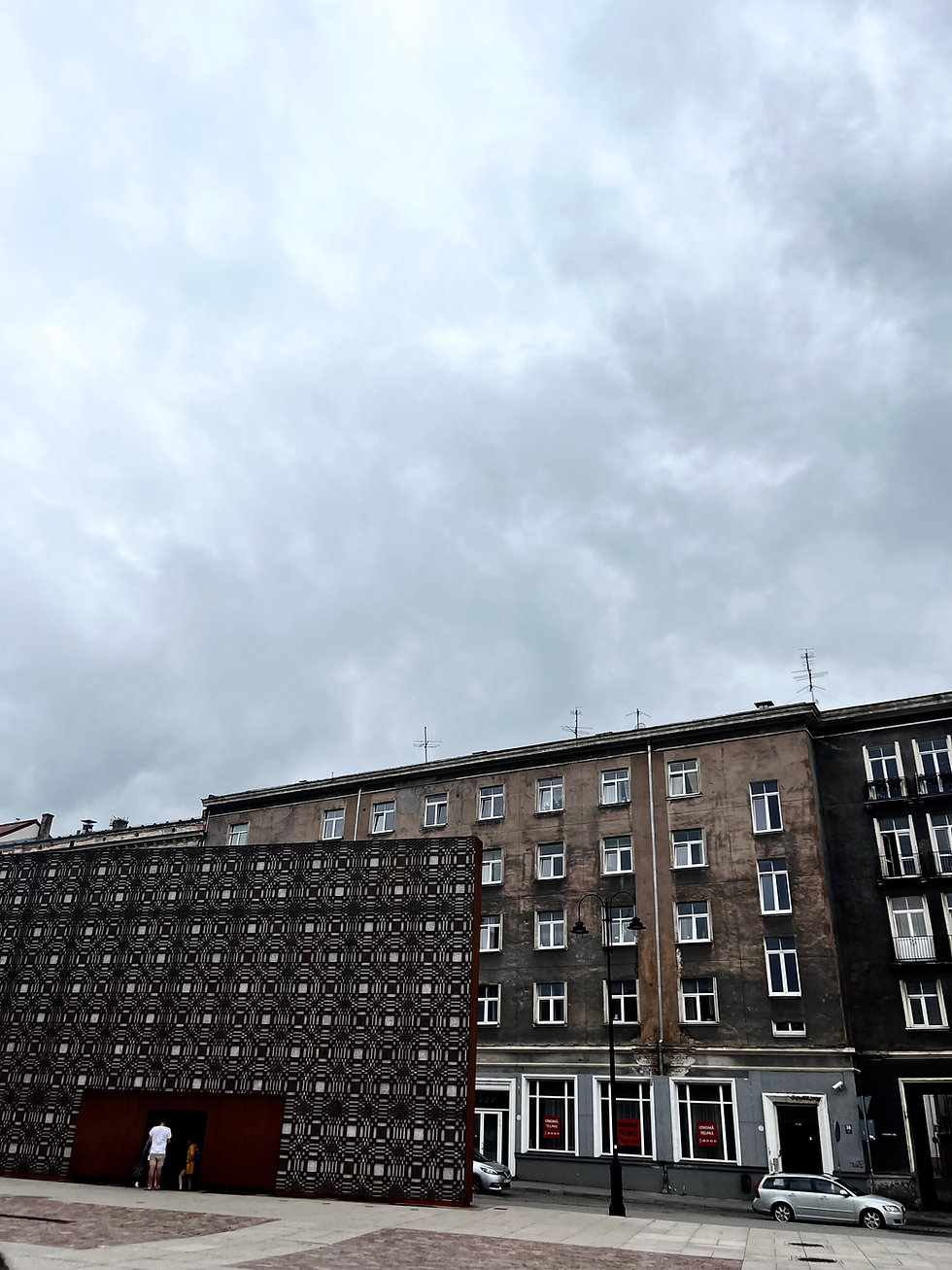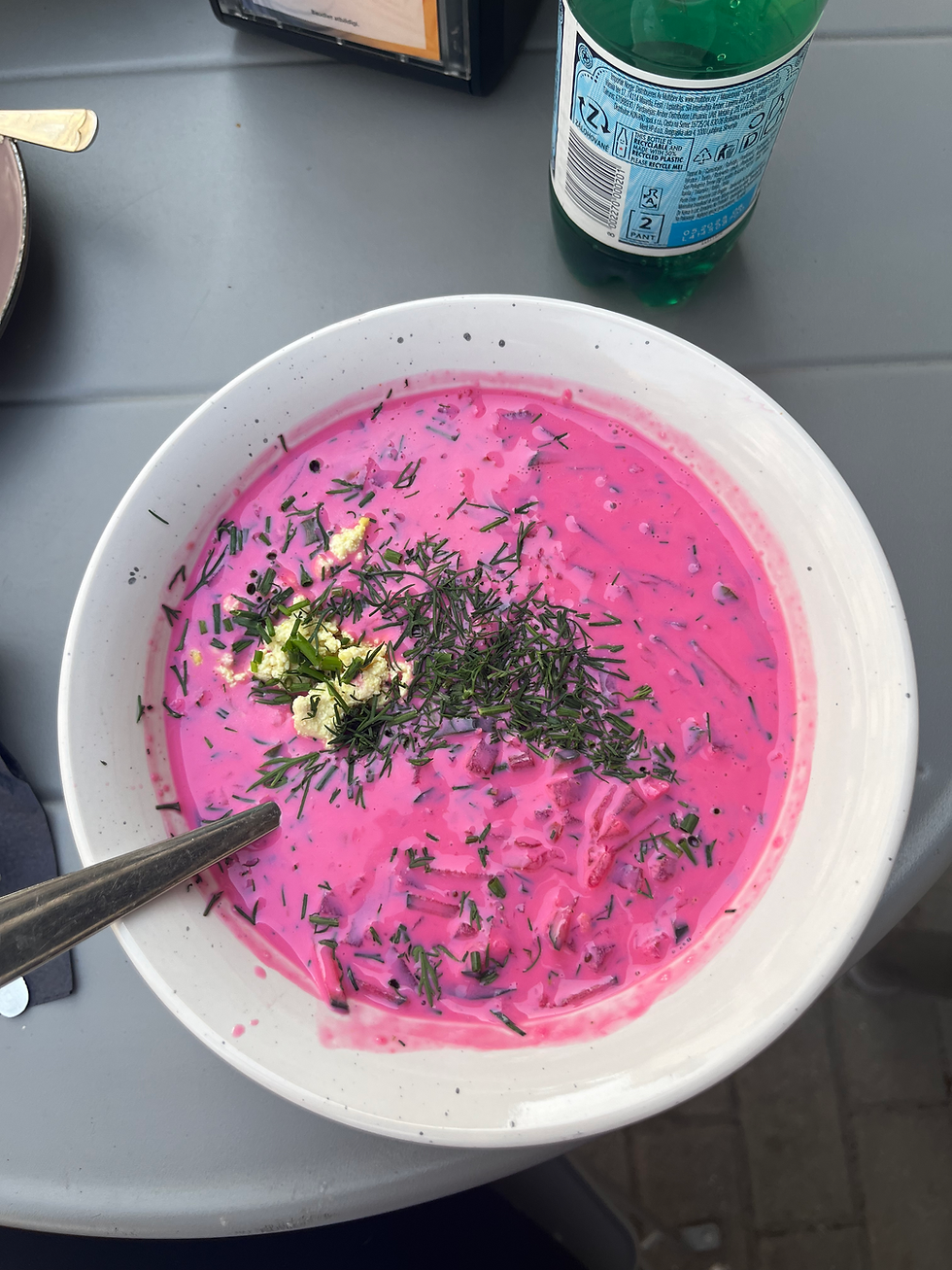Latvia, a Post-Soviet Success Story
- charlsiedoan
- Jul 3, 2024
- 7 min read
Updated: Oct 27, 2024

I have been to Latvia before; two very cold, rainy days in October. I remember arriving via bus in the middle of the day and having to pee so bad, but not having any cash to pay for the bus station bathroom. I’d just come from Estonia, where cash is basically obsolete. I was also heading to Romania next to link up with a group tour, and I was very stressed.
So, I came back to Latvia because I felt like we had unfinished business. Also, because there was a relatively cheap direct AirBaltic flight from Tbilisi to Riga, and I really did not want a layover in Istanbul.
I’ll forever sing the praises of the Baltics, not necessarily as one of the most interesting regions to visit but definitely as a wonderful place to exist. In Riga, hotels and taxis are cheap, summer days are long, the beer is cold, the coffee is delicious, and the food is fresh. People are on the quieter side and the cities are small and walkable. The Daugava River is clean enough to swim in and the landscape is dotted with the spires of old German buildings. On a pretty summer day, the many parks are filled with people and there’s a street musician in every square.

Every country I have been in this trip used to be a Soviet republic, which is it hard to believe given just how different they are from each other. Tashkent, Tbilisi, and Riga all used to be part of the same country; how could anyone have possibly thought that was a good idea? In Latvia, you eat pickles, rye bread, and smoked fish and it gets dark at 11pm in the summer. In Georgia, you spend hours on Sunday mornings standing in an orthodox church and then you go spray paint “fuck Russia” on an underpass. And in Uzbekistan, you pass giant turquoise domes on your way to work and drink cup after cup of Chinese green tea.
In terms of quality of life, security, stability, and the economy, the Baltics are a post-Soviet success story. Latvia is one of the only post-Soviet countries with a free press, a democratically elected leader, and without Putin breathing down its neck.
For our sakes, I’ve made a few helpful tables for you.
Legitimate Democracy?
Uzbekistan | No |
Kazakhstan | No |
Azerbaijan | No |
Georgia | Yes |
Latvia | Yes |
Imminent military threat from Russia (in my opinion)
Uzbekistan | No |
Kazakhstan | Yes |
Azerbaijan | No |
Georgia | Yes |
Latvia | No |
EU and NATO Membership
Uzbekistan | No |
Kazakhstan | No |
Azerbaijan | No |
Georgia | No |
Latvia | Yes |
Press Freedom Ranking
Uzbekistan | 148th |
Kazakhstan | 142nd |
Azerbaijan | 164th |
Georgia | 103rd |
Latvia | 12th |
GDP per capita
Uzbekistan | 2496.1 |
Kazakhstan | 13136.6 |
Azerbaijan | 7155.1 |
Georgia | 8120.4 |
Latvia | 23184.3 |
When I landed in Riga I exhaled a little bit, because Riga feels familiar. Western. I’m not saying that western is better—of course not—but I grew up in Texas. I am a child of the west, and the west feels like home. Latvia is thoroughly Europeanized and EU-ized and NATO-ized. Riga is easy to get to. It’s the home of AirBaltic, so you can fly here from most major European hubs. There’s no need for a two-leg trip on a sketchy budget airline with a vomiting teenager in the seat next to you (aka, how I got to Baku).
This is, of course, very ironic. A thousand years ago, Central Asia and the Caucasus were urban and cosmopolitan, at the very heart of culture, learning, and trade, while Baltic lands were occupied by pagan tribes. Latvia didn’t even become Christian until the thirteenth century, when German missionaries came to the Baltics.
Settle in, folks, and I’ll tell you the story.
Latvia was a part of the Russian Empire for about two hundred years before becoming independent right after World War I, when the czar fell. That independence did not last very long because…you know what happened to Russia after the fall of the empire. On August 23, 1939, the Molotov-Ribbentrop Pact divided Eastern Europe between Soviet Russia and Nazi Germany.
Growing up in the United States, the idea that you should never surrender and never concede is kind of beaten into one’s head. Americans don’t wave the white flag. But that’s also because, as a terrifying, heavily armed, beast of a country, we don’t have to. And if I’ve learned anything in the last month, it is that smaller countries have to conduct their foreign policy very differently.
Latvia quickly surrendered to the Soviets to save its small population, and thousands of members of the Latvian intelligentsia were deported to Siberia.. But a few determined Latvian diplomats outside of the country kept acting as representatives of an independent Latvia, and as a result, more than fifty countries (including the U.S.) never officially recognized the Baltic states as part of the Soviet Union.

Hitler made his biggest mistake in 1941 and invaded the Soviet Union, so Riga was under the control of the Nazis until 1944. The Germans were at first welcomed into Riga with parades and flowers—they’re saving us from the Russians!—but obviously the Nazis weren’t any better than the Soviets.
Hitler lost, obviously. The bunker where he died was filled in and is now a parking lot in Berlin. I’ve been there.
The Soviets rolled back in and there were more deportations. Bands of resistance fighters lived in the birch forests. Those who could fled across the water to Sweden. Stalin died in 1953 and Khrushchev tried to erase his personality cult from collective memory and calm everybody down in what is now called the “Khrushchev Thaw.” The Soviet Union went from being cold enough to freeze vodka to being cold enough to freeze only water.
Russian people and language were slowly supplanting Latvians. Career military men could choose which Soviet republic they wanted to live in once they retired, and many chose Latvia, with its comparatively warmer climate, its beaches, and its proximity to western comforts. In 1989, Latvia’s population was only about 52% ethnically Latvian. Before World War II, it had been 77%.
But under Gorbachev, the Baltic states launched a campaign of nonviolent political resistance that received a good bit of western media attention. On August 23, 1989, fifty years to the day after the Molotov-Ribbentrop Pact, thousands of Estonians, Latvians, and Lithuanians held hands to make a human chain that stretched from Tallin through Riga to Vilnius.
On September 6, 1991, the USSR recognized Latvia’s independence. In 1994, the first McDonald’s in the Baltics opened in the center of Riga. By 2004, Latvia was a member of the EU and of NATO. In 2014, Latvia joined the Eurozone.

Why were the Baltic states were immediately welcomed back into the European fold, when places like Georgia are still fighting to be let in?
I think it’s a simple matter of geography, ethnicity, and language. The Baltics are on the very edge of continental Europe. Baltic people are light-skinned, light-haired, and Christian. Baltic languages are related to other European languages: Polish, Czech, Finnish, etc.
Ultimately, it benefits Europe economically and security-wise to be friends with that little strip of land between Russia and the Baltic Sea. Europe doesn’t need Georgia and Kazakhstan the way it needs Latvia, Lithuania, and Estonia. So sure, Latvia is a success story, but that success is thanks to a heavy dose of circumstance.
Okay, after my scintillating summary, you probably are thinking, “Charlsie, I have to go to Latvia now!” Here are a few recommendations:
Coffee
Kurts Coffee is a small kiosk at the corner of Vermanes darz park. Probably the best coffee I’ve had my entire trip, plus the proceeds go to funding medical care for Kurt, a special-needs boy. His family started the coffee shop for him.
MiiT Coffee, where I’m writing this right now, is in Central Riga and has great coffee, great sandwiches, great lunch specials, and free, password-less Wifi.
Food
The Central Market (Centraltirgus) is huge, cheap, and really fun to walk around. Take about ten euros in cash and you can buy enough food for your next few meals: bread, cheese, smoked fish, vegetables, pickles. There’s a very popular stand with Uzbek food that I find hilarious. There’s also a food-court area with a bar, but note that the market closes at 6pm.
Mazā Terapija is a vegan restaurant I visited both times I was in Riga. Even if you’re not vegan…guys…it’s soooooo good. Please go! In the summer get the cold beet soup, and in the winter get the soylenka.

Better Bread is a gluten-free bakery that I just found myself at for some reason. It has such amazing chocolate buns and cardamom buns.
Things to Do
Hang out in parks! There are lovely parks separating the Old Town from central Riga; there’s plenty of benches.
Take a free walking tour with Free Tours Riga. I did their Old Riga tour the first time I was here and their Soviet Riga tour a couple of days ago. Both times I learned a lot (as you can tell) and had a really good time.
The Museum of the Occupation of Latvia is a solid museum by the river that is only 5 euros to enter, and it will provide even more context to the story I told you in this post. I saw a group of Mormons there.
The Latvian National Museum of Art is a very nice art museum showcasing Latvian art only; can you say you’ve seen much Latvian art? You can remedy that here!
The National Library of Latvia is a cool building across the Daugava River, with free access and free Wifi.
How to Get Around
Taxis are cheap through the Bolt app, and regional trains are also quite cheap. The ticketing website is really crappy, though, so you’ll need to go to the Central Station to buy tickets. The train schedule is available online.
Commenti